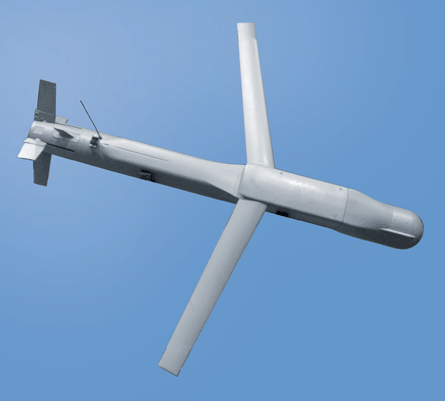Two competitors have unveiled competing designs to produce the next major precision attack munition for the US Air Force, as the bidding draws closer to entering an intense final phase.
For three years, a Boeing/Lockheed Martin team and Raytheon have competed for the multi-billion dollar Small Diameter Bomb (SDB) Increment II contract. Both competitors have participated in a risk-reduction phase to mature several critical technologies for the weapon, which is intended to attack moving targets in all weather conditions from stand-off range.
Dan Jaspering, Boeing's SDB II programme manager, expects the USAF to issue a final request for proposals in June, with bids due in July and contract award expected in the fourth quarter. J R Smith, Raytheon's business development manager for SDB II, outlines a similar schedule to contract award.
 |
|---|
The Boeing/Lockheed team's version of the 113kg (250lb)-class moving target weapon is based on the bomb body of Boeing's SDB Increment I - selected in 2003 - and a version of Lockheed's tri-mode seeker originally developed for the cancelled Joint Common Missile contract. Their Increment II version also features an identical scissor-style wingkit shared with its predecessor.
Raytheon, meanwhile, is seeking to usurp Boeing and Lockheed's combined grip on the US direct attack munition market. Its offering features an all-new, streamlined bomb casing and wingkit, with the latter showing a standard, swept-back aerofoil. The company is also developing a proprietary tri-mode sensor for the competition.
The seeker is a critical system for SDB II's role and combines a millimetre-wave radar, imaging infrared (IIR) camera and semi-active laser (SAL). "The difficult part of a programme like this was clearly the seeker," says Smith.
Raytheon developed a dual-mode seeker for the US Army's precision attack missile (PAM) programme. A follow-on programme launched development of the tri-mode IPAM seeker, which is being adapted for Raytheon's SDB II proposal.
The dual-mode seeker includes the uncooled IIR camera and SAL. Adding the radar allows the munition to recognise and acquire moving targets automatically after falling through cloud cover. But the requirement for a tri-mode seeker also increases the complexity of the cost structure.
"It's a tough issue," says Smith. "Fully integrated tri-mode seekers are not off the shelf. To get them at a reasonable price is probably the biggest challenge in the programme."
Source: Flight International













